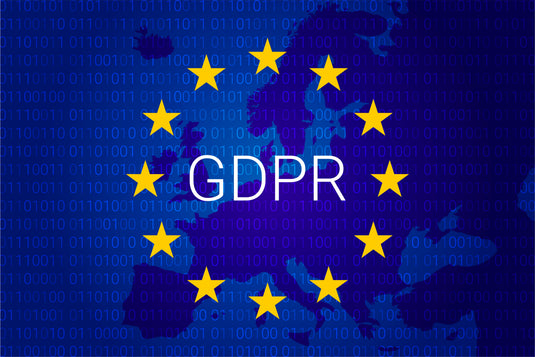The Practical Guide to Cold Emailing under GDPR
Are your cold email campaigns compliant with GDPR regulations? In a digital landscape shaped by stringent data protection laws, mastering the art of sending GDPR-compliant cold emails is essential to navigating this evolving marketing terrain successfully. Picture this scenario: you craft a compelling cold email campaign only to later realize it violates GDPR guidelines, risking hefty fines and tarnishing your brand's reputation — a nightmare for any marketer.
In this comprehensive guide on cold emailing under GDPR, we delve into the nuances of maintaining compliance while leveraging the power of personalized outreach. From best practices for collecting and processing personal data to navigating the impact of GDPR on your cold email strategy, we equip you with actionable tips to ensure your campaigns align with data protection regulations. Stay ahead of the curve and unlock the potential of cold email marketing within the boundaries of GDPR.
Let's explore how to ethically engage your audience and drive conversions through GDPR-compliant cold email practices.
Take your cold mailing to a new level
Cold emailing can still be an effective marketing strategy under GDPR regulations. By following the guidelines and best practices, you can ensure your cold email campaigns are GDPR compliant and maintain data protection regulations. Here are some tips to take your cold mailing to a new level:
Make sure you have an appropriate reason and the prospect is targeted
Before sending a cold email, ensure that you have a valid reason for contacting the prospect. GDPR requires a legitimate interest or the prospect's consent for processing their personal data. Make sure that your email is relevant to the recipient's job role or industry to enhance the chances of engagement.
Should be able to explain how you acquired the prospect's email
If asked, you should be able to explain how you obtained the prospect's email address. This can be through networking events, business cards, or previous interactions. Showing transparency and providing this information builds trust and ensures compliance with GDPR guidelines.
Explain Legal Interest in Cold Email Copy
In your cold email, it's essential to clearly communicate your legal interest in contacting the recipient. Explain how your product or service benefits them or their organization, and why it is relevant to their needs or responsibilities. This helps establish a legitimate interest for processing their personal data.
Unsubscribing process should be easy and quick
To comply with GDPR regulations, provide a clear and simple method for recipients to unsubscribe from your emails. Include an unsubscribe link in every email you send, making it effortless for recipients to opt-out of future communications.
Maintain Your Database regularly
Regularly review and update your email database to ensure it only contains accurate and relevant information. Remove any contacts who have unsubscribed or requested to be removed, and keep your list up to date to avoid sending emails to inactive or outdated addresses.
Data Security must be practiced
Protecting personal data is crucial under GDPR. Utilize secure email systems, regularly update your software, and implement appropriate security measures to safeguard the personal data you collect and handle.
Reply to the complaints and questions of prospects related to the use of their data
Address any complaints or inquiries promptly and professionally regarding the use of personal data. Responding to concerns and questions demonstrates your commitment to data privacy and helps maintain trust with your prospects.
By following these tips, you can send GDPR compliant cold emails and still achieve successful outreach. Implementing these best practices helps you stay compliant with data protection regulations while effectively reaching your target audience.
🚀 Boost your Sales with AI 🚀
In today's digital age, leveraging the power of artificial intelligence (AI) can give your business a significant edge. When it comes to cold emailing, AI-powered tools can streamline your outreach efforts and help you send GDPR compliant emails that are personalized and effective. Here are some ways AI can boost your sales through cold emailing:
Increased Personalization
One of the key factors in successful cold emailing is personalization. With AI tools, you can automate the process of personalizing your emails by dynamically inserting relevant information such as the recipient's name, company, and industry. This level of personalization makes your emails more engaging and increases the chances of a positive response.
Enhanced Email Deliverability
AI can also help improve your email deliverability rates. By analyzing recipient behavior and engagement patterns, AI-powered tools can identify the best time to send your emails, the subject lines that are most likely to grab attention, and even the optimal length of your emails. These insights enable you to optimize your cold email campaigns for maximum deliverability and impact.
Smarter Segmentation
Segmenting your email list based on various criteria allows you to tailor your messaging to different audience segments. AI can assist in analyzing your database and automatically segmenting your contacts based on demographics, past interactions, and other relevant factors. This ensures that each segment receives targeted and relevant content, increasing the likelihood of conversion.
Advanced Lead Scoring
AI can play a crucial role in lead scoring, helping you prioritize your outreach efforts. By analyzing prospect behavior, AI-powered tools can assign a score to each lead, indicating their level of interest and readiness to convert. This enables you to focus your efforts on the most promising leads, improving your overall efficiency and response rates.
Automated Follow-ups
Follow-up emails are an essential part of any cold email campaign. AI can automate the process of sending personalized follow-ups based on predefined triggers or recipient behavior. This ensures that you stay in touch with your prospects without the need for manual follow-up. Automated follow-ups help you maintain momentum and increase the chances of conversion.
Data-driven Decision Making
AI-powered analytics tools can provide you with valuable insights into the performance of your cold email campaigns. From open rates and click-through rates to conversion rates and response rates, AI can help you track and analyze the success of your campaigns. These insights allow you to make data-driven decisions, optimize your strategies, and continually improve your results.
Compliance with GDPR Regulations
With the introduction of GDPR, it is crucial to ensure that your cold email campaigns are GDPR compliant. AI-powered tools can help you manage and process personal data in a way that aligns with GDPR regulations. They can assist in obtaining explicit consent, tracking and managing unsubscribe requests, and securely storing and processing personal data. This helps you avoid penalties and maintain trust with your recipients.
In conclusion, incorporating AI into your cold email strategy can significantly boost your sales efforts. From increased personalization and enhanced deliverability to smarter segmentation and automated follow-ups, AI-powered tools provide you with the means to send GDPR compliant cold emails that are effective and efficient. By leveraging the power of AI, you can maximize your outreach efforts and drive better results for your business.
Remember, success lies not only in the technology you use but also in the quality and relevance of your content. Craft compelling messages that offer value to your recipients, and use AI as a tool to enhance your outreach efforts. With the right combination of AI and great content, you can take your cold emailing to new heights and achieve remarkable sales success.
Key takeaways
1. Have a clear purpose and legitimate interest: When sending cold emails, ensure that you have a specific purpose and a legitimate interest in reaching out. Clearly communicate your reason for contacting the recipient and how it relates to your business objectives.
2. Be transparent about who you are: Provide complete and accurate information about your identity, including your name, organization, and contact details. This helps build trust and shows that you are a legitimate sender.
3. Provide an opt-out option: Give recipients the option to unsubscribe or opt out of future communications. Include a prominent and easy-to-use unsubscribe link in your cold emails. Respect their decision and promptly remove them from your mailing list upon request.
4. Store your prospects' data safely: Take appropriate measures to ensure the security and confidentiality of the personal data you collect through your cold email campaign. Implement technical and organizational measures to protect against unauthorized access, loss, or misuse of the data.
5. Regularly update your database: Keep your mailing list up to date by regularly reviewing and updating the contact information. Remove any outdated or incorrect data to ensure that you are only contacting valid recipients.
6. Keep proof of how you acquired someone's data: Document and retain evidence of how you obtained the personal data of individuals in your cold email outreach. This can include records of consent, legitimate interest assessment, or any other lawful basis for data processing.
7. Use double opt-in: Consider implementing a double opt-in process for email marketing. With double opt-in, recipients confirm their subscription by responding to a verification email. This helps ensure that individuals have explicitly consented to receive communication from you.
Remember, these tips are meant to help you navigate the complexities of GDPR compliance when conducting cold email campaigns. By following these best practices, you can not only stay on the right side of the law but also build trusting relationships with your recipients.
How to track email conversion rate
Tracking the email conversion rate is crucial for evaluating the effectiveness of your cold email campaigns. By measuring the number of recipients who take the desired action after receiving your email, you can gain valuable insights into the success of your outreach efforts. Here are some tips on how to track email conversion rates in 2021:
1. Utilize email tracking software: Invest in a reliable email tracking software that provides detailed analytics and metrics. These tools allow you to track open rates, click-through rates (CTRs), and conversions. They also provide insights into which links or calls to action (CTAs) are generating the most engagement.
2. Implement UTM parameters: Use UTM parameters in your email links to track the traffic and conversions generated specifically from your cold email campaigns. This allows you to analyze the performance of different campaigns and optimize your strategies accordingly.
3. Set up conversion goals in Google Analytics: Link your email marketing campaigns to Google Analytics and set up conversion goals. This enables you to track the actions taken by recipients after clicking on your email links, such as form submissions, purchases, or other desired actions.
4. Implement pixel tracking: Pixel tracking involves embedding a small, invisible image or pixel within your email. When a recipient opens the email, the pixel is loaded, and you can track this interaction. This method provides data on email opens and allows you to calculate open rates accurately.
5. Use unique landing pages: Create dedicated landing pages with unique URLs for each cold email campaign. Use these URLs in your emails and track the visits and conversions associated with each landing page separately. This provides more granular data and helps you measure the effectiveness of individual campaigns.
Remember to regularly analyze the data collected from tracking your email conversion rates. Identify patterns, optimize your strategies, and continuously refine your cold email campaigns to improve your conversion rates and achieve your marketing goals.
Overall, with the right tracking tools and strategies in place, you can gain valuable insights into the success of your cold email campaigns and make data-driven decisions to improve your results in 2024.
Disclaimer: The information provided on this website regarding email outreach and GDPR compliance is for general informational purposes only. We are not legal professionals, and our content should not be considered legal advice. While we strive to ensure the accuracy and reliability of the information presented, it is collected and presented by our team based on our understanding and experiences, and may contain inaccuracies or errors. We strongly recommend consulting with a qualified legal professional for specific advice or questions related to your legal needs or compliance requirements. Use of our website and reliance on any information provided herein is solely at your own risk.



